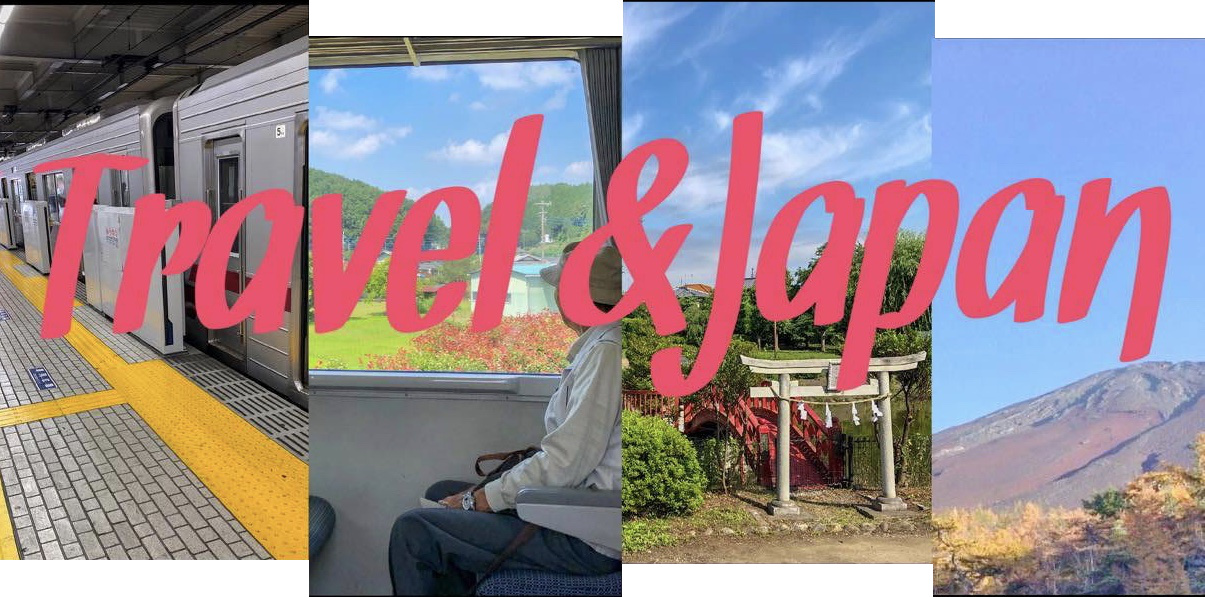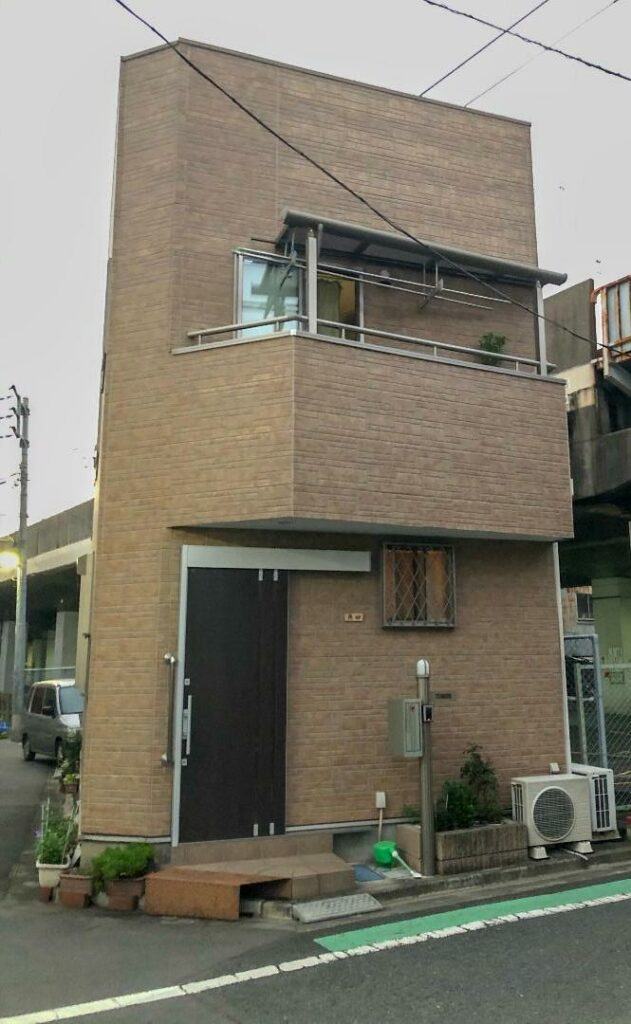
Most homes in Japan are small, compact, and built anywhere one can create. I have seen houses with a wide front tapering to a v at the back. It doesn’t take much to do a home demolition in Japan.
Contractors don’t use any machines. In America and some other countries, large machinery or explosives are uses to bring down homes, but the houses are much larger and better constructed than in Japan.
Let’s talk about how they do it in Japan.
10 Year Home
To better understand why there is so much home demolition in Japan, you need to realize that Japan’s houses have about a 10-year cycle. Homes in Japan don’t grow in value but depreciate like a car. After 30 years, they are worthless.
Japanese people will live in their homes for their whole life. When they die, the house has no resale value and is either used by the family for storage or destroyed and rebuilt. Some families keep the home in good order to honor their ancestors, but this usually only happens in the countryside.
Since Japan’s population is declining rapidly, there are abandon homes everywhere. Most are falling in upon themselves, but some are several hundreds of years old and well built. The Japanese government has abandoned homes for young couples to match homes with young families, but not many Japanese people do this.
In Toyko, demolition and construction are standard. It’s not difficult to find this going on every four blocks. It seems almost assembly-like because it happens so fast. There are two days of destruction and a month of building.
Personal Items
The family removes all personal items and loose debris. The Japanese will make a ritual out of doing this and giving proper thanks to their ancestors’ items. Besides, you never know when past generations left money or something ancient in a room.
Notification
Weeks before the work begins, a construction company person will deliver a note to each mailbox in the affected area. If the company believes you will be affected by the noise, they will let you know about the demolition.
The letter is usually typed and gives the start date, time, and the number of days. The letter will also offer a handwritten apology for any noise or inconvenience. Suppose something occurs out of the norm during the project. In that case, a representative will personally knock on every door in the affected area and explain what happened and offer a personal apology.
Metal Pipe Frame
A metal pipe frame goes up first. Japan takes safety first seriously. The Injury rate in Japan for construction is almost nonexistent.
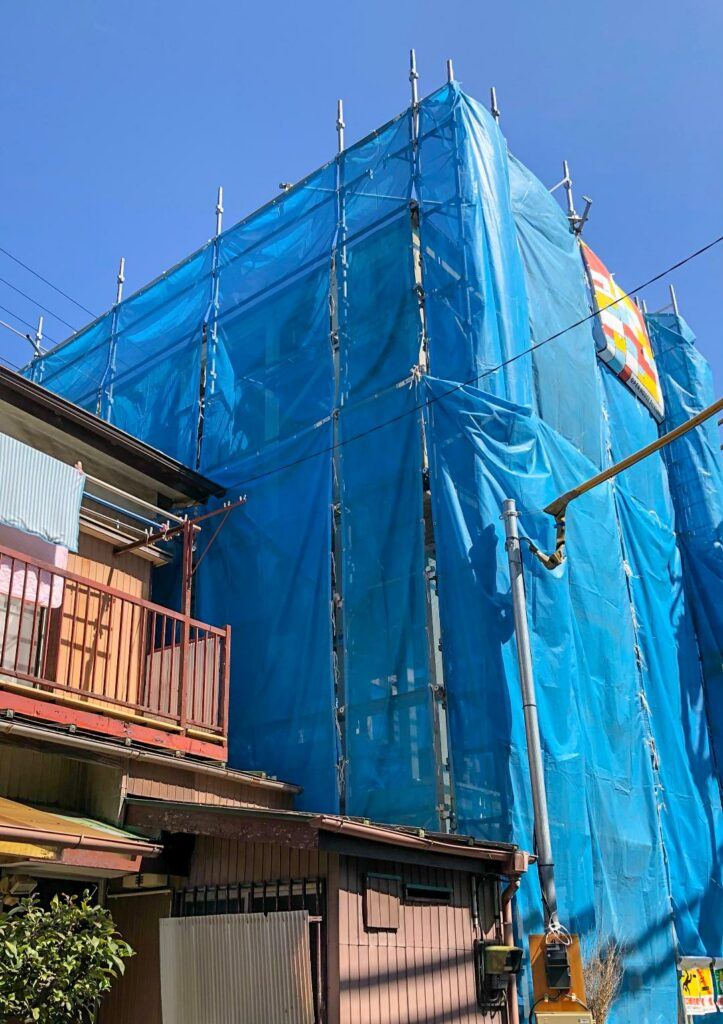
Large blue tarps cover the metal pipe frame ensuring that no construction material can get out of this blue bubble. The blue tarps also reduce noise, so the neighborhood is not disturbed. I cannot stress enough how vital keeping noise to a minimum in Japan is.
Safety Area
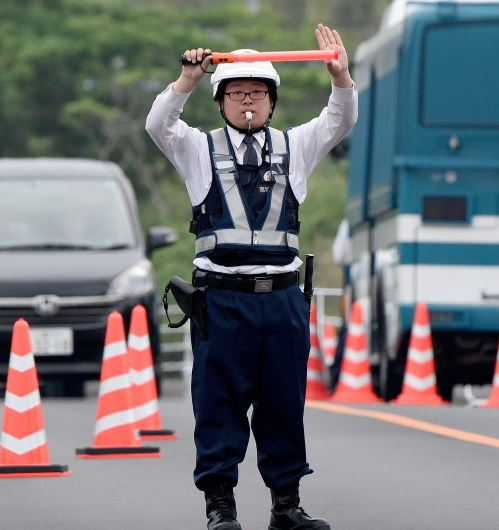
During this time, there will be a safety zone put up around the home. Safety personnel will direct traffic of cars and people around the site and ensure the area is safe. These workers take their job seriously and will even cover you if something falls while you’re in the area.
Construction Workers
A group of construction workers will disassemble the house using standard tools over a couple of days. The group starts on the top floor unless they need to clear an area to move the house pieces up and down the stairs.
Most homes in Japan have two or three levels because of the small building area. They can’t build out, so they build up. It leads to some crazy designs, and most homes are not square.
Japan uses thin, lightweight material in home construction. The walls are so thin that you can hear everything outside, usually locust and cricket, because Japan is a quiet country. The homes have no insulation and only delicate support structures holding them up.
The homes effortlessly sway with earthquakes and usually don’t collapse.
The construction crew makes a hole in the roof and just starts ripping everything down. The team throws the material down the stairs, where other team members load it onto small trucks.
Everything goes down the stairs until the team is on the first floor. There are no basements in Japan, so after the structure is down, the job is done.
Digging
Any pipes or cables buried in the ground dug up. Japanese construction only uses modern technology when building a new home. They don’t use any old structure at all.
In America and many other countries, construction companies will use old cables or pipelines to decrease costs. Several cases are taking on past problems that cause issues for the home or surrounding land.
In Japan, new cable installs and sewage and water pipes are the norms. The new home is fresh from the utilities up. Japanese people expect it.
Recycle
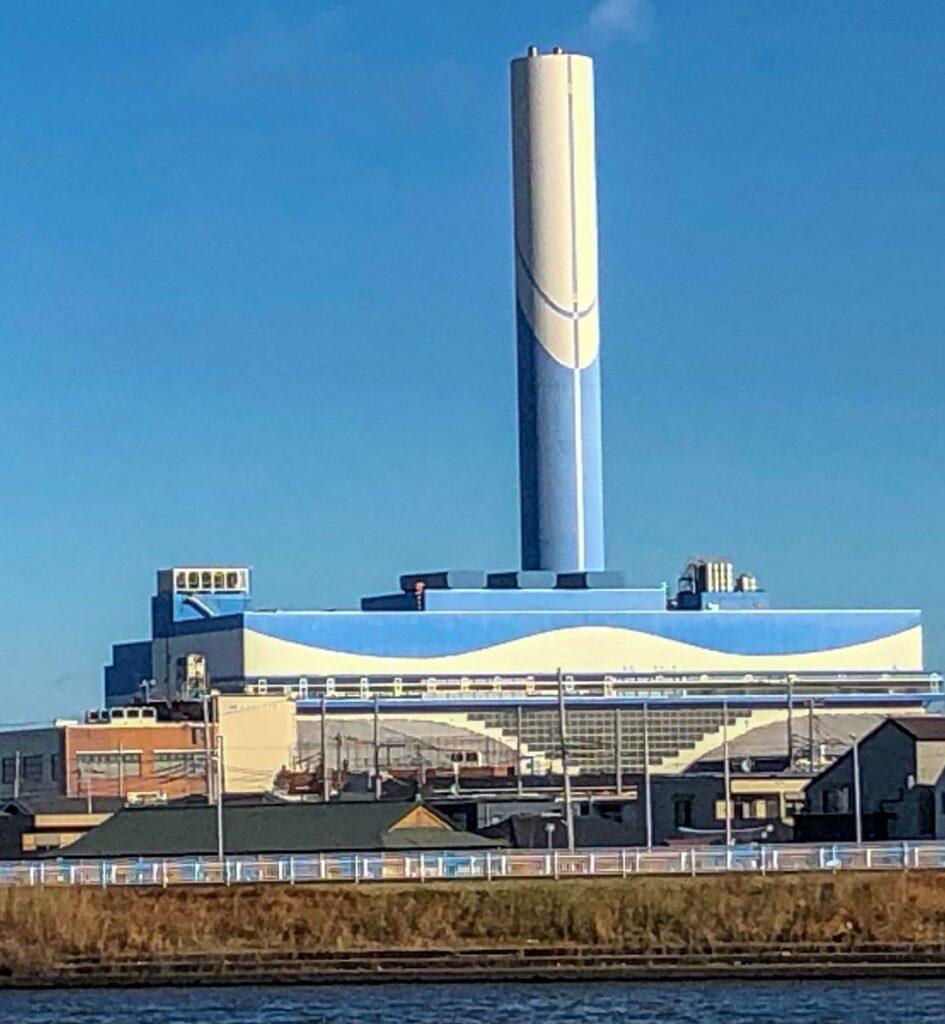
In America and several other countries, the debris from home demolition is taken to the nearest landfill and buried. This common practice is illegal in Japan, where everything is recycled or reused.
Burnable goes to one of several recycling centers that burns trash. The smokestacks on these centers are tall, so the population isn’t engulfed in the smoke.
The rest goes to a standard recycling center and is completely recycled. It’s as if the house never existed when recycling is complete.
Demolition Complete
When the demolition is complete, the area looks like a garden waiting for planting. There is nothing except a rope to stop people from walking on the fresh soil. Construction of a new home will start in a few days or months.
Many Japanese will build the house over a year to pay cash as they go, but I’ve also seen homes go up almost overnight. The construction depends on the buyer or the seller and their needs.
Read about renting in Japan here.
Check out the travelandjapan.com YouTube channel here.
Check out the travelandjapan.com SafeChat channel here.
Have you watched a home being demolished in Japan? Share your experience in the comment section below.
Do you have questions about homes in Japan? Please leave your question in the comments below, and I’ll do my best to answer it.
